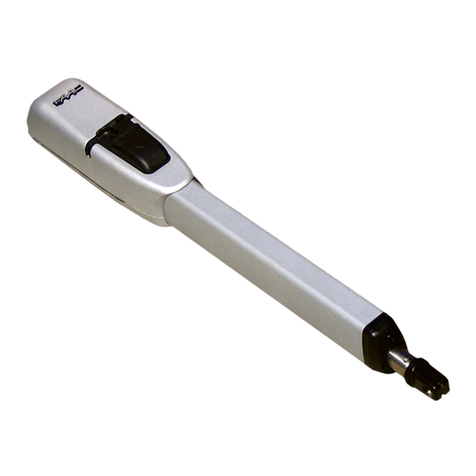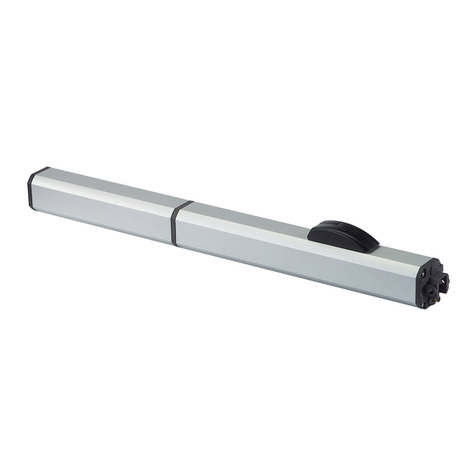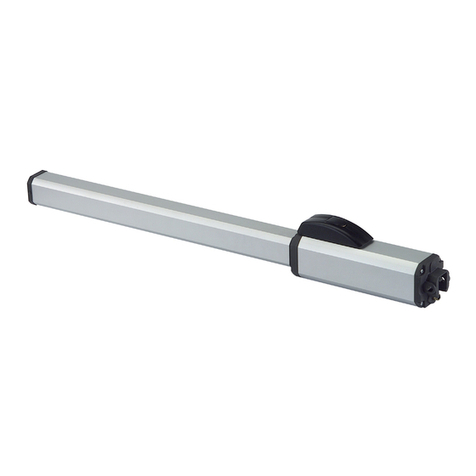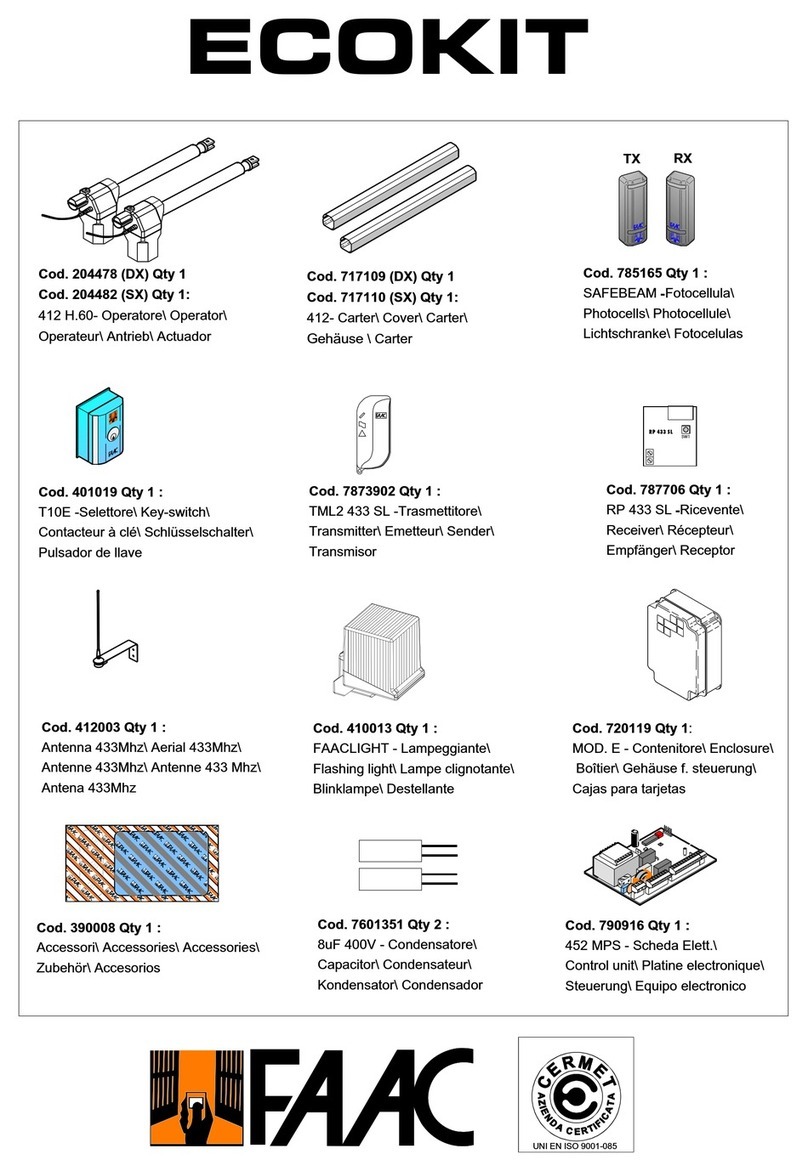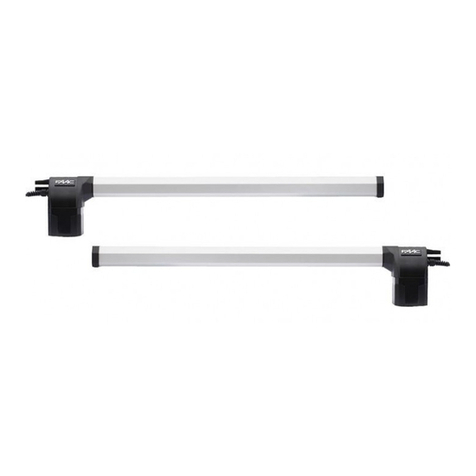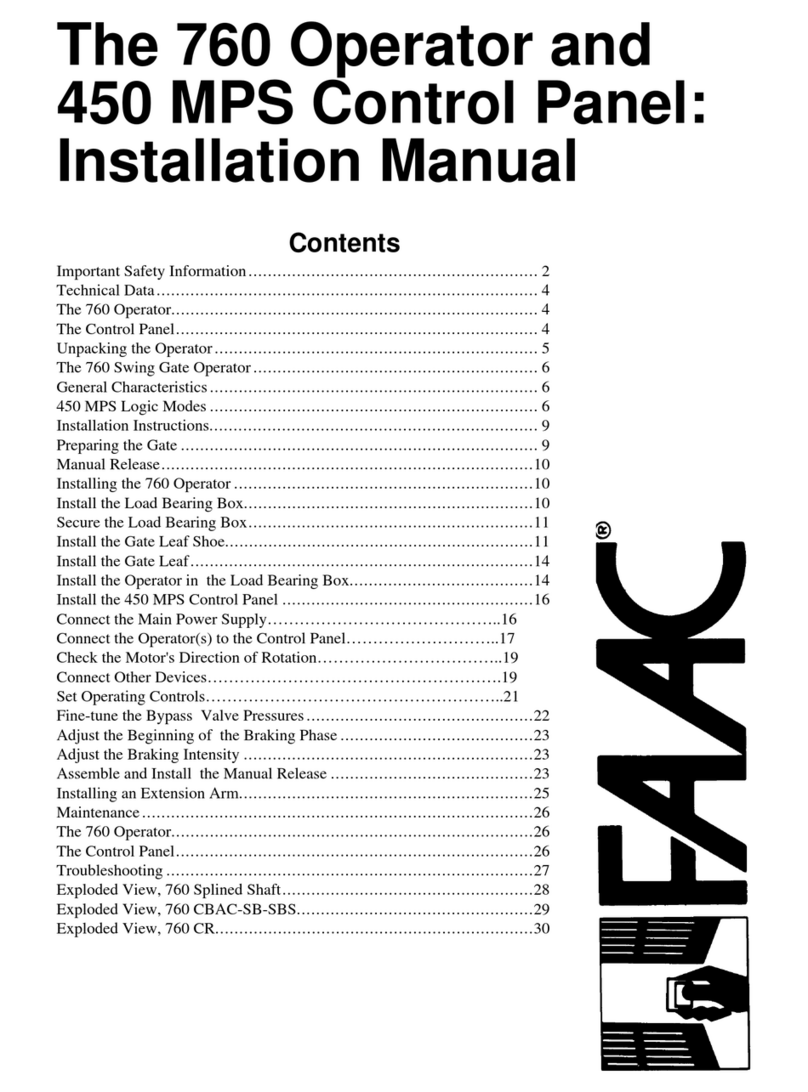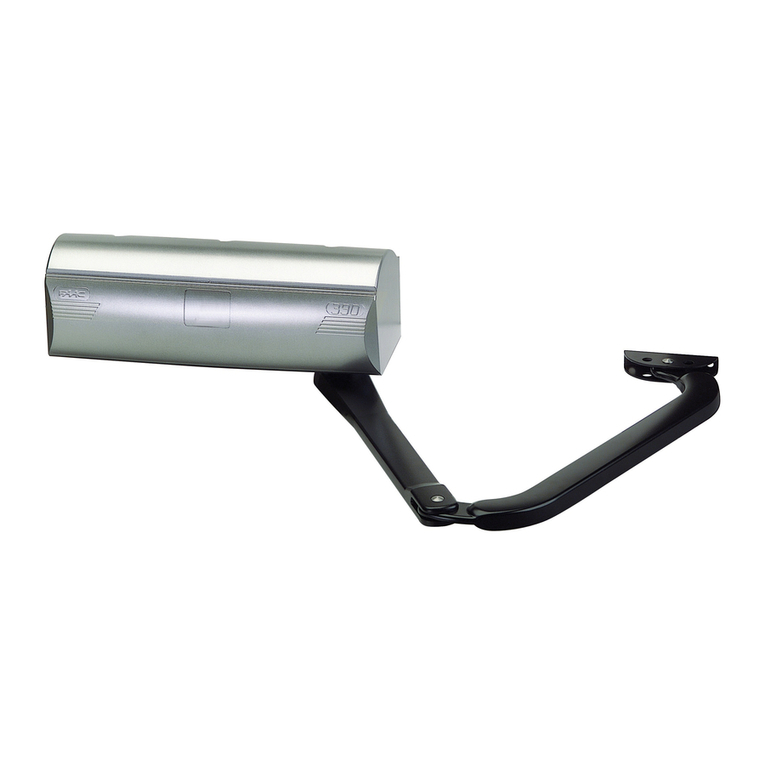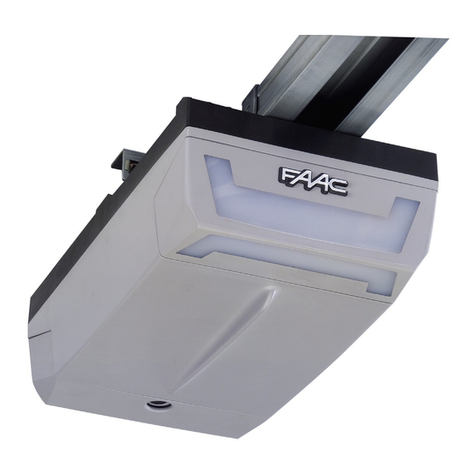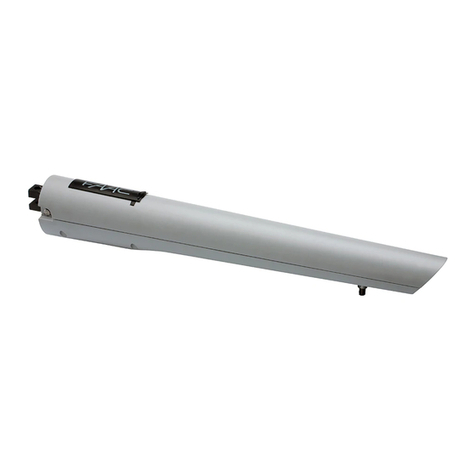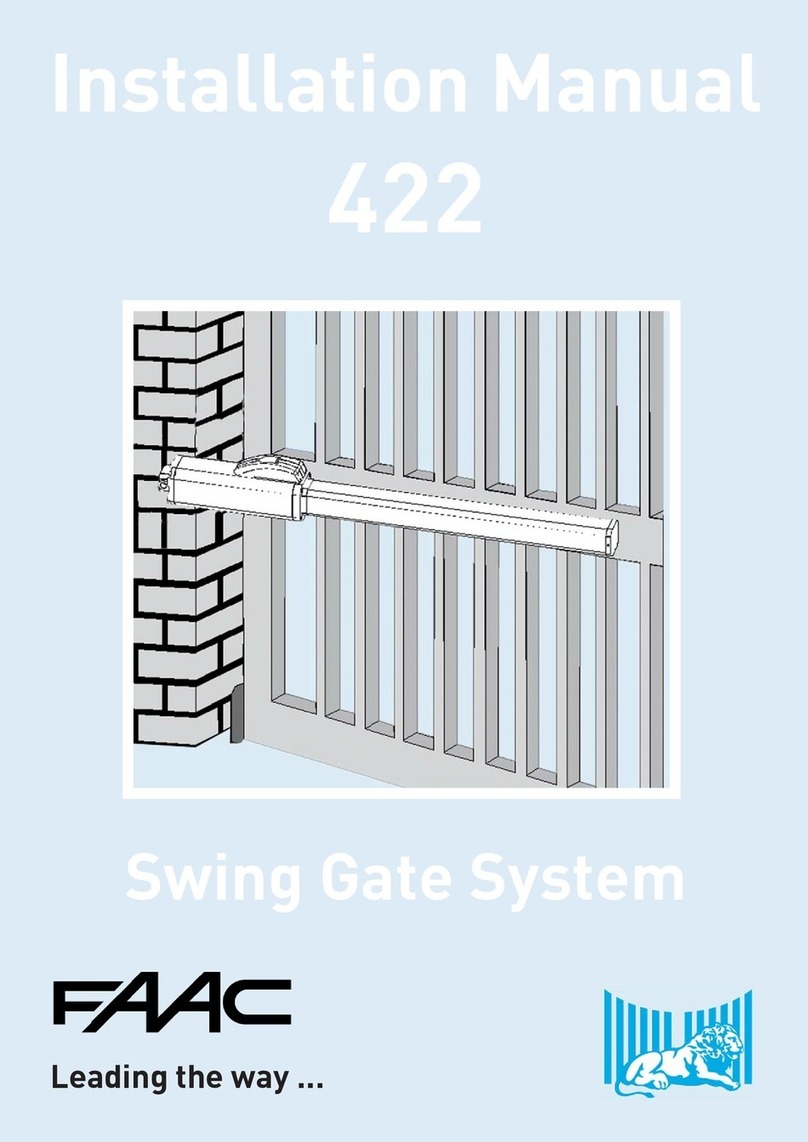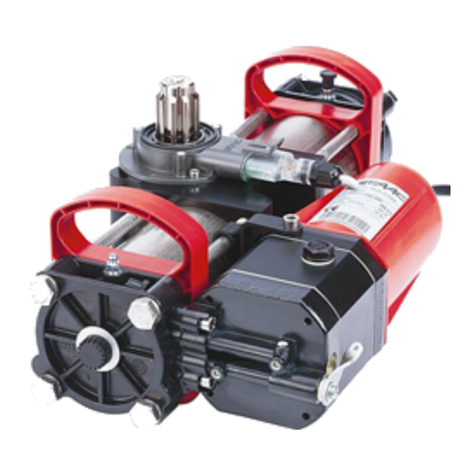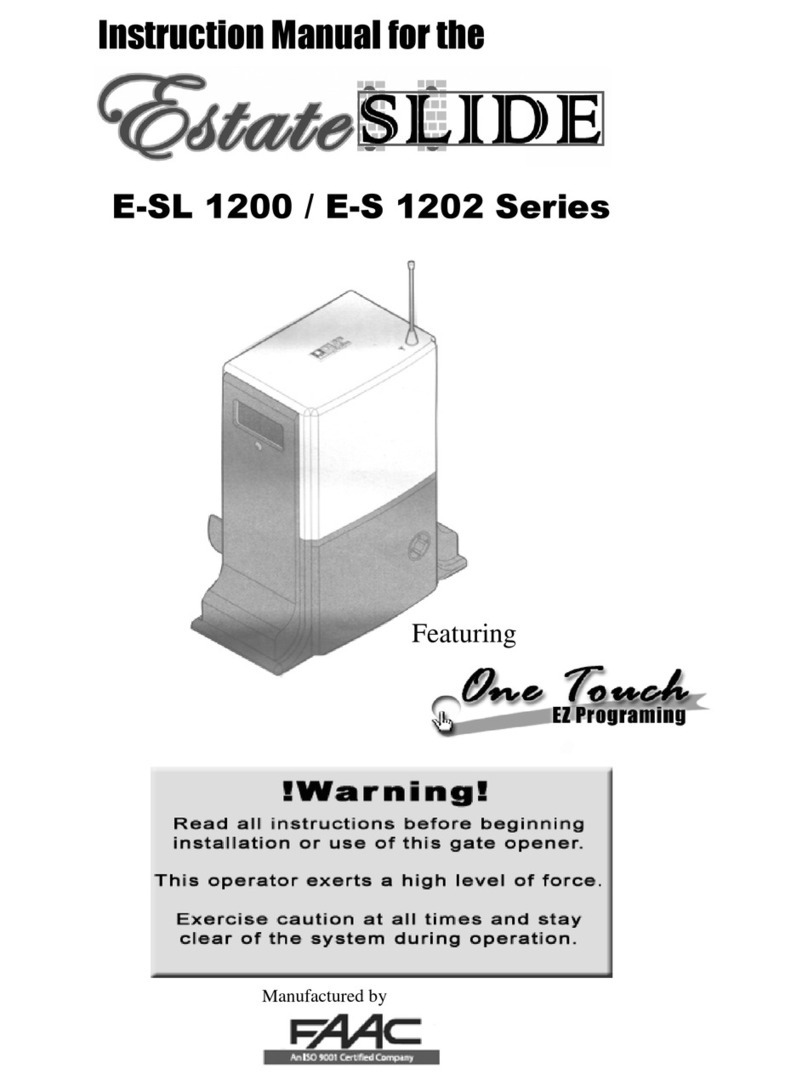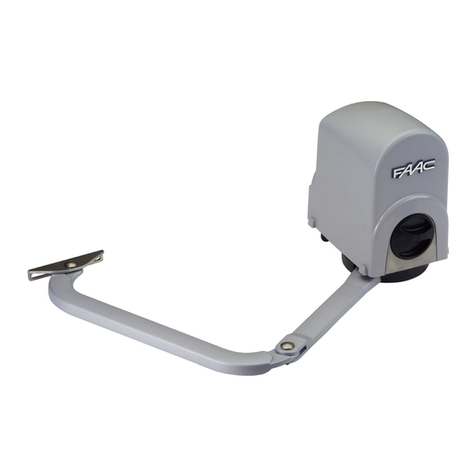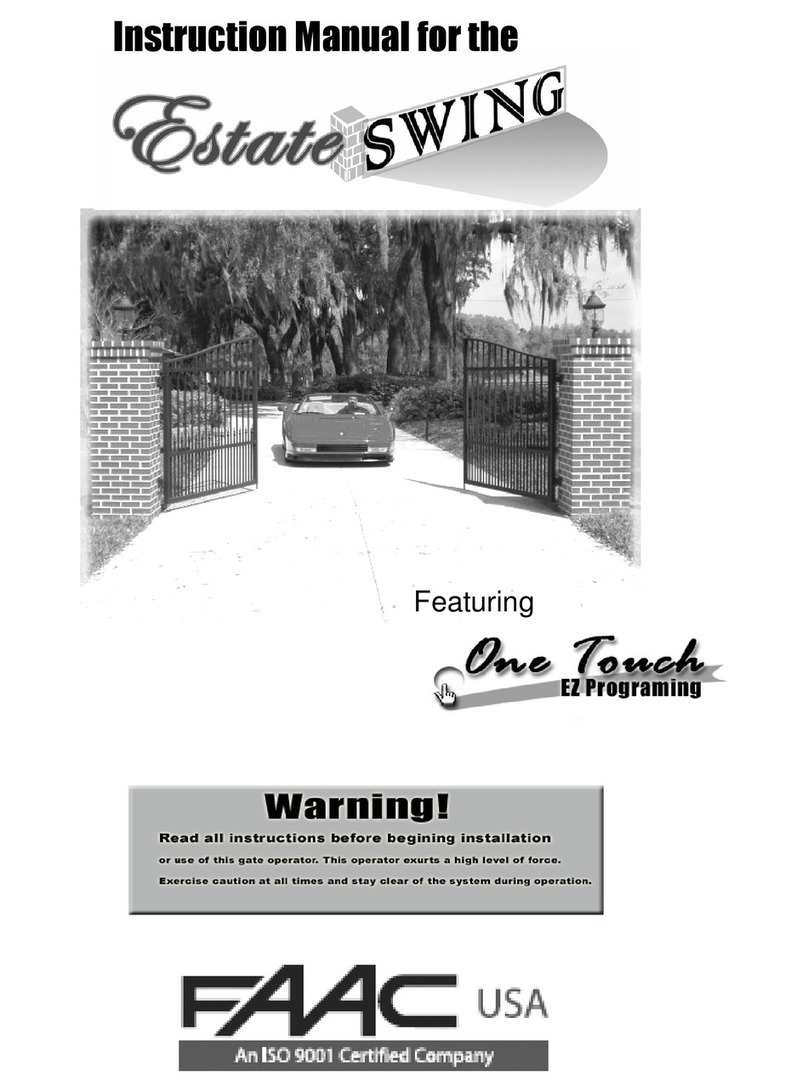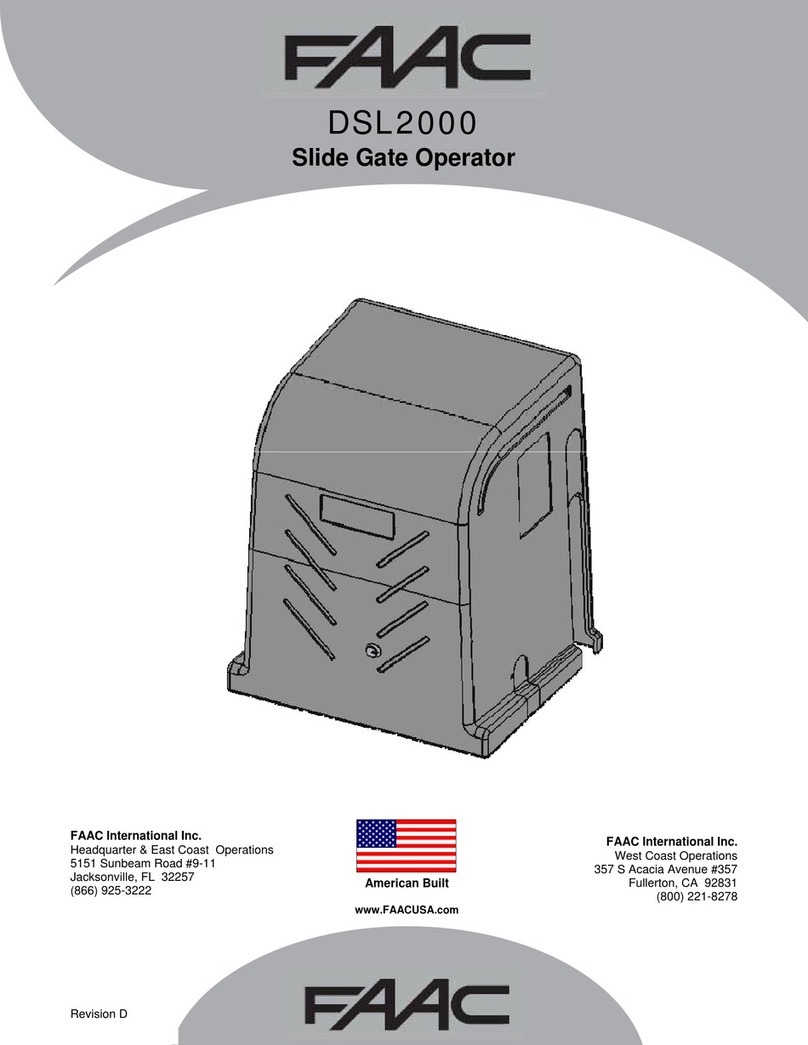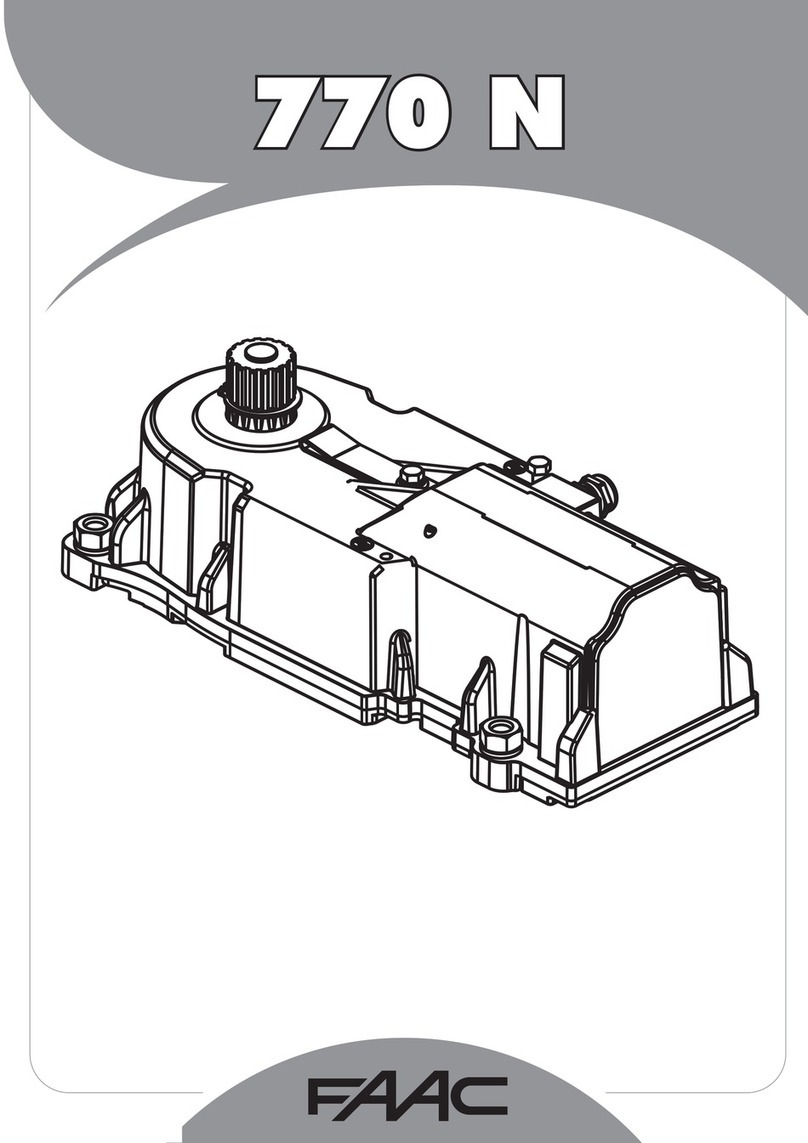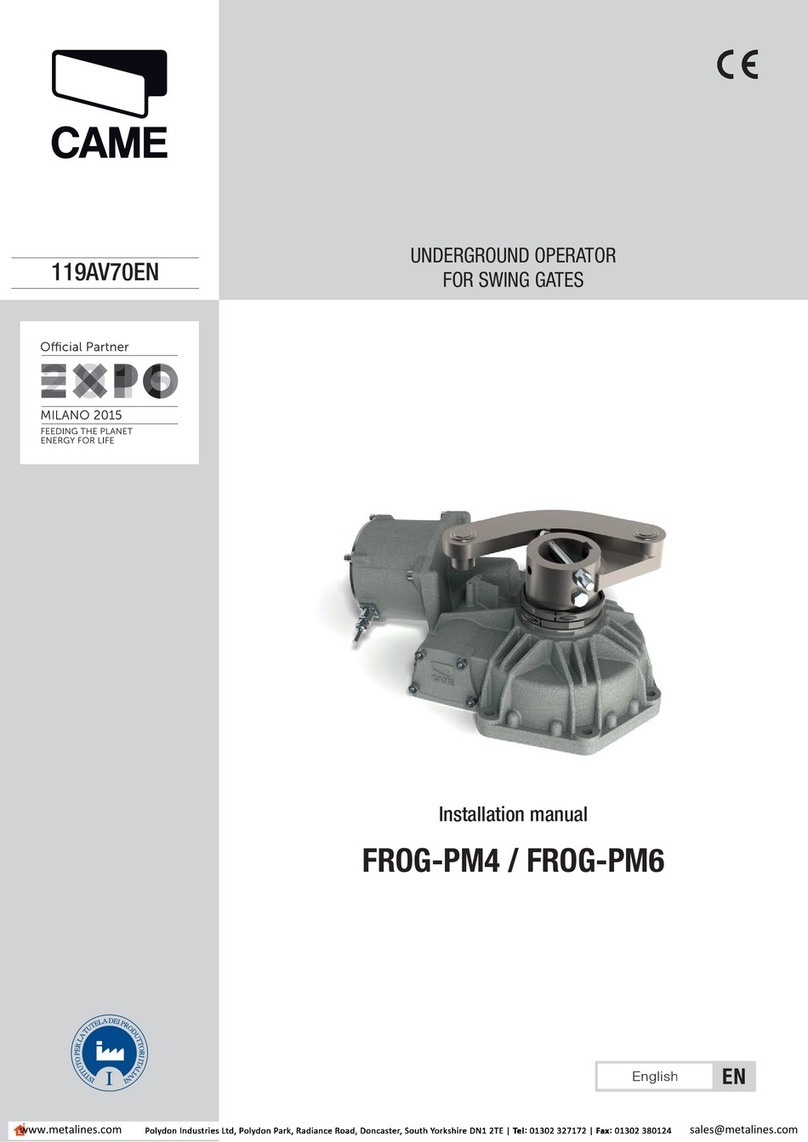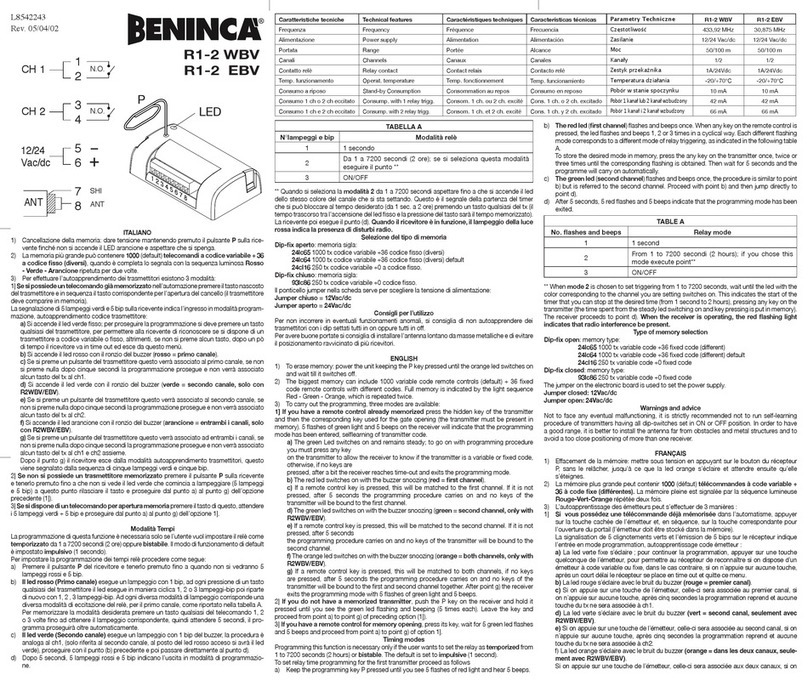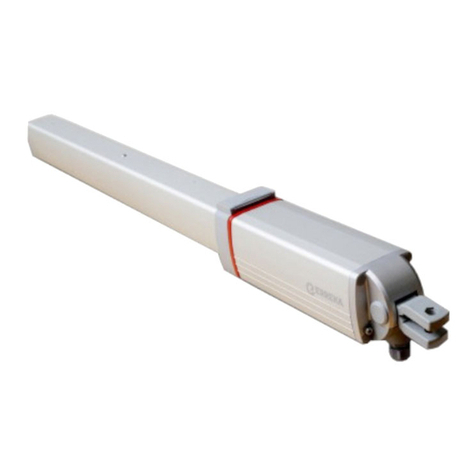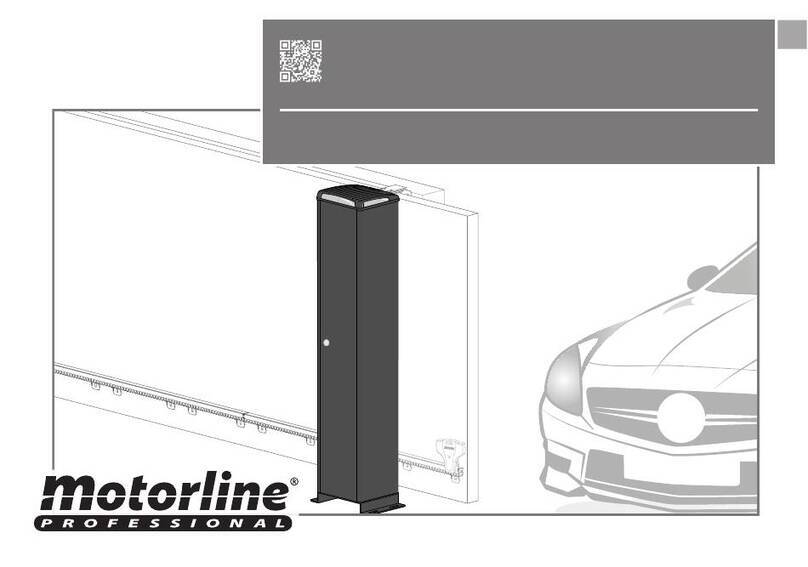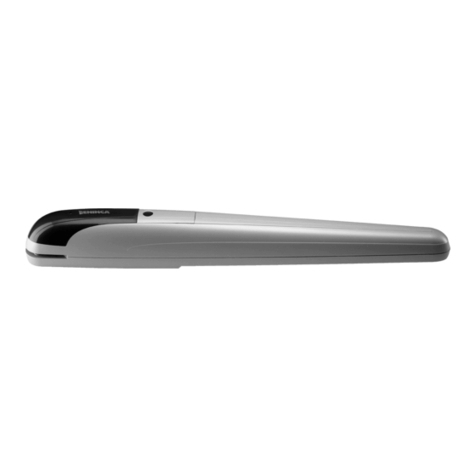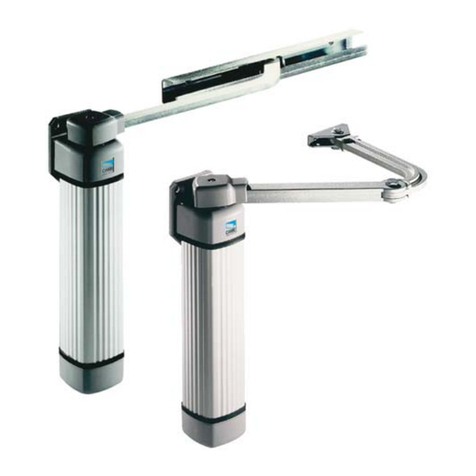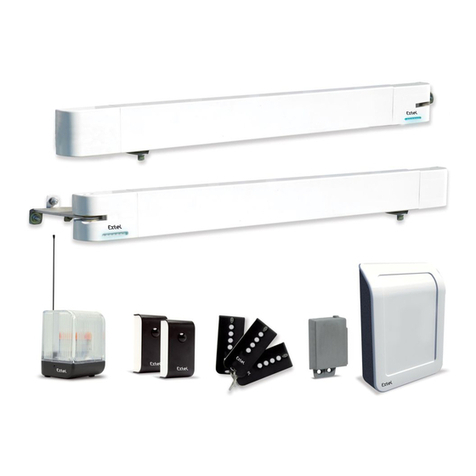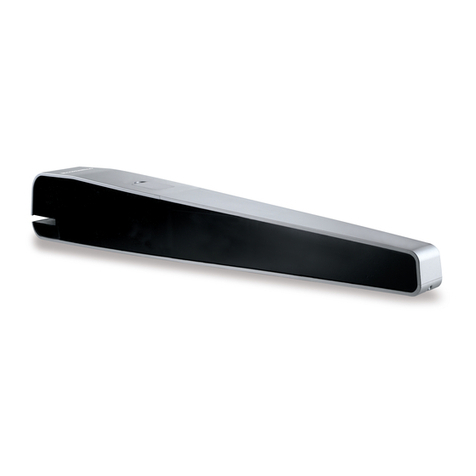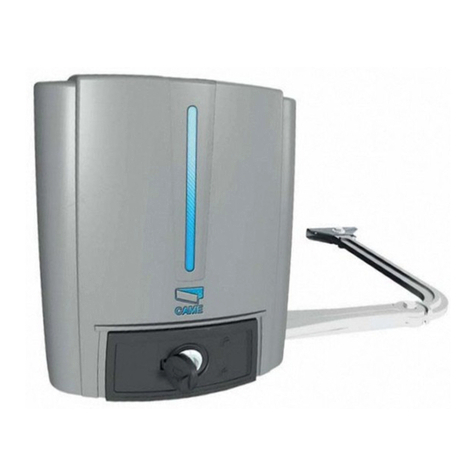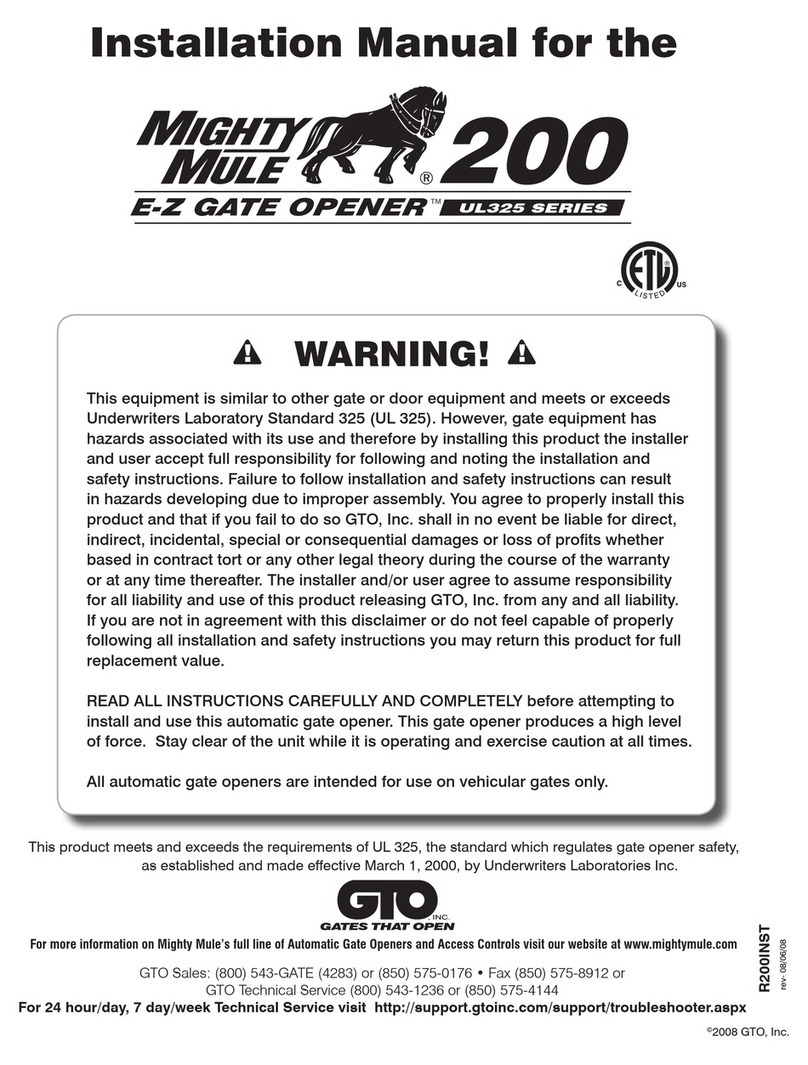
13
ENGLISH ENGLISH
1) IMPORTANT! FAAC strongly recommends to follow these instructions
carefully for the safety of persons. Improper installation or misuse of
the product will cause very serious damages to persons.
2) Readtheinstructionscarefully beforeinstallingtheproduct.
3) Packagingmaterials(plastic,polystyreneetc.)areapotentialhazard
andmustbekeptoutofreachofchildren.
4) Keeptheseinstructionsforfuturereference.
5) This product has been designed and manufactured only for the use
statedinthismanual.Anyotherusenotexpresslysetforthwillaffectthe
reliabilityoftheproductand/orcouldbesourceofhazard.
6) FAAC S.p.A.cannot be heldresponsible forany damage causedby
improperuseordifferentfromtheuseforwhichtheautomationsystemis
destinedto.
7) Do not use this device in areas subject to explosion: the presence of
flammablegasorfumesisaserioushazard.
8) MechanicalconstructiveelementsmustcomplywithUNI8612,CENprEN
12604andCENprEN12605standards.
CountriesoutsidetheECshallfollowtheregulationsabovebesidestheir
nationalnormativereferencesinordertooffertheutmostsafety.
9) Faaccannotbeheldresponsibleforfailuretoobservetechnicalstan-
dardsintheconstructionofgatesanddoors,orforanydeformationof
thegateswhichmayoccurduringuse.
10) InstallationmustcomplywithUNI8612,CENprEN12453andCENprEN
12635.
ThedegreeofsafetyoftheautomationmustbeC+D.
10A) IEC335-2-95
11) Beforeattemptinganyjobonthesystemoroperator,cutoutelectric
poweranddisconnectthebatteries,ifinstalled.
12) Anomnipowerswitchshallbeprovidedfortheinstallationwithanopen-
ingdistance ofthe contactsof 3mm ofmore. Alternatively,use a6A
EC MACHINE DIRECTIVE COMPLIANCE DECLARATION
(DIRECTIVE 89/392 EEC, APPENDIX II, PART B)
Manufacturer: FAAC S.p.A.
Address: Via Benini, 1 - 40069 Zola Predosa BOLOGNA - ITALY
Hereby declares that: the 525/530 automation system
• is intended to be incorporated into machinery, or to be assembled with other machinery to constitute
machinery in compliance with the requirements of Directive 89/392 EEC, and subsequent amendments 91/
368 EEC, 93/44 EEC and 93/68 EEC;
• complies with the essential safety requirements in the following EEC Directives:
73/23 EEC and subsequent amendment 93/68 EEC.
89/336 EEC and subsequent amendments 92/31 EEC and 93/68 EEC.
and furthermore declares that unit must not be put into service until the machinery into which it is incorporated
or of which it is a component has been identified and declared to be in conformity with the provisions of
Directive 89/392 EEC and subsequent amendments enacted by the national implementing legislation.
Bologna, 1 January 1999 Managing Director
A.Bassi
thermomagneticbreakerwithmulti-poleswitching.
13) Ensurethatthereisadifferentialswitchup-lineoftheelectricalsystem,
withatripthresholdof0.03A.
14) Checkthattheearthingplantisinperfectconditionandconnectitto
themetallicparts.Alsoearththeyellow/greenwireoftheoperator.
15) Theautomationisfittedwithananti-crushsafetysystemthatisatorque
controldevice.Inanycase,furthersafetydevicesshallbeinstalled.
16) Thesafetydevices(e.g.photocells,safetyedges,etc.)protectareas
wherethereisa mechanicalmovementhazard,e.g.crushing,entrap-
mentandcutting.
17) Eachinstallationmustbefittedwithatleastoneflashinglight(e.g.FAAC
LAMP,MINILAMP,etc.)aswellasawarningplatesuitablyfixedtothe
gate,besidesthesafetydevicesasperpoint16above.
18) Faaccannotbeheldresponsibleregardingsafetyandcorrectfunction-
ingoftheautomationintheeventthatpartsotherthanFaacoriginal
partsareused.
19) UseonlyFaacoriginalsparepartsformaintenanceoperations.
20) Donotcarryoutanymodificationstoautomationcomponents.
21) Theinstallermustsupplyallinformationregardingmanualoperationof
thesystemintheeventofanemergencyandprovidetheend-userwith
the”End-userGuide”attachedtotheproduct.
22) Donotallowchildrenoradultstostandneartheproductduringopera-
tion.
23) Keepoutofreachofchildrentheremoteradiocontrolsandanycontrol
devices.Theautomationcouldbeoperatedunintentionally.
24) Theend-usermustavoidanyattempttorepairoradjusttheautomation
personally.Theseoperationsmustbecarriedoutexclusivelybyqualified
personnel.
25) What is not explicitly stated in these instructions is not permitted.
IMPORTANT NOTICE FOR THE INSTALLER
GENERAL SAFETY REGULATIONS
